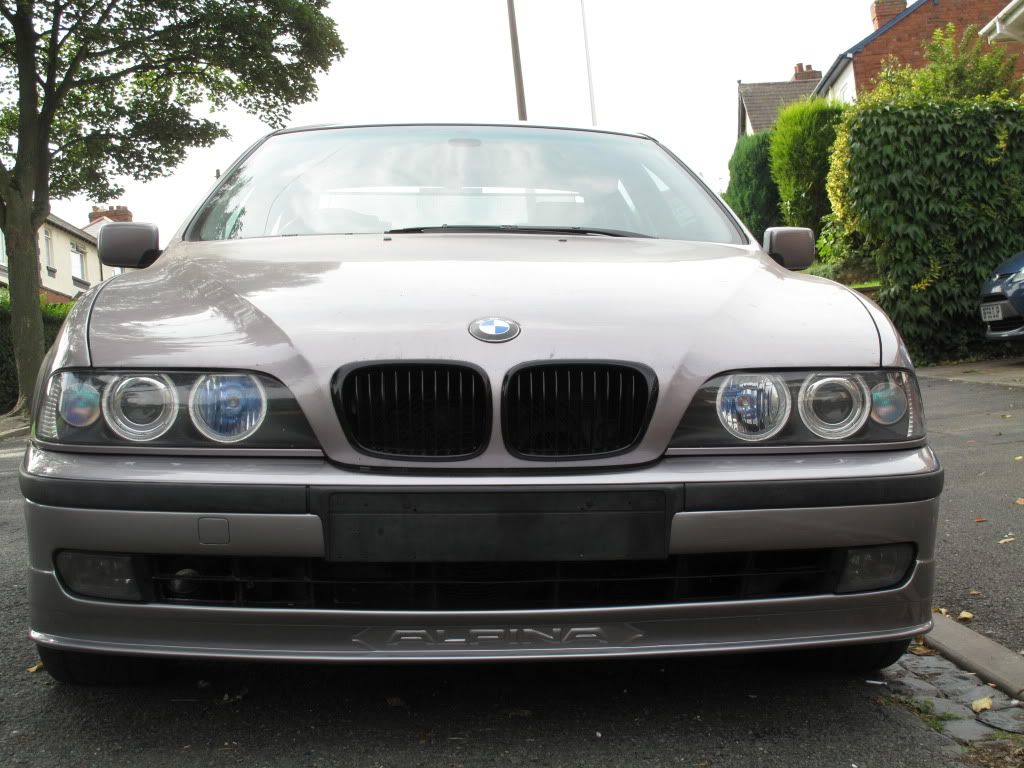2020. 2. 18. 23:42ㆍ카테고리 없음
.The medium-duty is a range of manufactured by since 1948. Derived from the smaller F-Series pickup trucks, the medium-duty range is currently in its eighth generation. The facelift version of the medium duty F-series (conventional cab)The medium-duty F-Series was marketed as a 1½ ton F-5 and 2 ton F-6, in both conventional and (COE) configurations. The F-5 and F-6 also served as the basis for the B-Series bus chassis; produced primarily for school bus use, the B-series was a bare chassis aft of the firewall.Shared with the light-duty F-Series, the F-5 was powered by a 226 cubic-inch inline-6 with a 239 cubic-inch V8 as an option.
For the 1951 model year, the medium duty F-series received a facelift, including a new grille. Through 1951, a 254 cubic-inch inline-6 was optional for the F-6; for 1952, the 226 was replaced by a 215 cubic-inch inline-6. 1953-1955 Ford F-620Coinciding with the fiftieth anniversary of Ford Motor Company, the second-generation F-Series was released for 1953.

Serial Bewerbungsmaster Professional 2012 Ford F150
Alongside the vehicle redesign, the series nomenclature underwent a revision, with the F-5 and F-6 becoming the F-500 and F-600, respectively. The medium-duty range retained both conventional and COE cab configurations, as a tractor, straight truck, or bus chassis.For 1956, F-Series medium-duty trucks shared the cab redesign of the light duty trucks, including its wraparound windshield and vertical A-pillars.For 1954, Ford ended production of the long-running Flathead V8, replacing it with a 239 cubic-inch; the 215 cubic-inch inline-6 was expanded to 223 cubic inches. For 1956, the V8 was expanded to 272 cubic inches. 1960 Ford F-500The third-generation F-Series was released for 1957, introducing several design features adopted by the model range for over two decades. On all versions of the F-Series, the hood became a clamshell design; the fenders were no longer separate from the cab. Following the legalization of quad headlights for 1958, the grille was redesigned, essentially eliminating its gap from the hood and bumper.In another change, the F-Series COE was replaced by the, a tilt-cab design providing better egress and engine access; a single generation was produced until 1990.A 223 cubic-inch inline-six was offered as a standard engine. The Ford Y-Block was carried over from the previous generation, expanded to 292 cubic inches for 1958.
Ford F-600The fourth-generation F-Series saw the medium-duty trucks adopt the larger and wider cab introduced by the pickup trucks. In place of sharing drivetrains with lighter-duty Ford trucks, the medium-duty Ford trucks were fitted with six-cylinder and V8 engines developed specifically for truck use. The model range was expanded, with the F-700/750 shifted from the heavy-duty range to the medium-duty range.The fourth generation marked the final generation that medium-duty trucks shared bodywork with light-duty Ford F-Series. For 1961, F-800 and above trucks were given their own fascia (with a central slotted grille).
1972 Ford F-500The fifth-generation F-Series was introduced for the 1967 model year, with Ford diverging the design of its light-duty and medium-duty F-Series. To streamline production costs, medium-duty trucks (and bus chassis) retained the cab and hood of light-duty trucks. In place of Twin I-Beam suspension, a solid front axle was retained; redesigned front fenders to accommodate a wider front track (and larger wheels) were used. The front fascia was derived largely from the fourth-generation heavy-duty F-Series, adopting a full-width grille between the headlamps.In 1968, a Caterpillar V8 diesel was introduced, becoming the first medium-duty Ford conventional to offer a diesel engine. To distinguish diesel versions, Ford added an additional '0' to the model designation, introducing the F-6000 and F-7000.For 1970, Ford introduced range of conventional trucks.
The first Class 8 conventional truck not derived from the F-Series, the L-Series (nicknamed the Louisville Line) replaced the N-Series and the heavy-duty F-Series. In another change, the stand-alone T-series designation for tandem-axle trucks (T-700 and above) was withdrawn. While the F-900 and F-1000 were discontinued, the F-800 was adopted by the medium-duty range.In 1973, the medium-duty range underwent a minor exterior revision.
Along with a redesign of 'FORD' lettering on the hood above the grille, the headlamp surrounds were enlarged. Alongside a white-painted grille, medium-duty trucks were offered with a chrome grille. Sixth generation (1980-1998) For the 1980 model year, the medium-duty F-Series underwent its first complete redesign since 1967. As with its predecessor, the cab and interior were derived from the of the period, with medium-duty trucks adopting their own chassis, front fascia, drivetrain, and suspension.
A two-door cab was standard, with a four-door crew cab offered as an option. The model range was carried over from the previous generation, with the F-600, F-700, and F-800; the B-Series denoted cowled bus chassis. The medium-duty F-series shared exterior styling derived from the larger L-Series trucks.Shifting from the rectangular grille of the F-Series and Ranger to the trapezoidal grille of the L-Series conventional and CL-Series COE, the sixth-generation medium-duty F-Series trucks adopted a taller, narrower hoodline, requiring the return of separate fenders (for the first time since the 1957 'Big Job' trucks).
A traditional rear-hinged hood was standard, but the optional forward-tilting hood (in the style of the larger trucks) quickly overtook it in popularity. As a running change during 1983 (for the 1984 model year), the medium-duty F-Series replaced 'F O R D' with the Ford Blue Oval grille emblem, becoming the last Ford vehicle to do so.At its launch, the medium-duty F-Series was offered with two gasoline V8 engines and two diesel V8 engines. A 370 cubic-inch V8 was standard, with an optional 429 cubic-inch V8; both were developed for commercial use. The 429 became standard fitment in 1991. At its 1980 introduction, the standard diesel option was a 8.2-L Detroit Diesel 'Fuel Pincher' V8 (for F-600 and F-700 trucks); the 10.4-L 3208 V8 made a return (redesignating F-800s as F-8000s). In 1985, Ford introduced inline-six diesel engines produced in a joint venture with in; 6.6 L and 7.8 L inline-sixes were phased in to replace the Detroit Diesel V8 and the Caterpillar 3208.
In place of adding an extra '0' to the model designation, versions with the New Holland engines wore 'Diesel' badging. In 1992, Ford introduced 5.9 L and 8.3 L straight-six diesels, phased in to replace the Ford-New Holland engines.During its 19-year production run, the sixth-generation medium-duty F-Series saw few changes outside of powertrain revisions.
After the 1984 logo change, the medium-duty F-Series would not see any exterior change (aside from engine badging) until 1995, when the forward-tilting hood was standardized with a more aerodynamic design; along with an enlarged grille, the turn signals were relocated outboard of the headlamps. With the exception of its steering column, the medium-duty F-Series used the interior and dashboard of the through its entire production. 2004–2015 F-750 Super Duty in use servicing a water pumpFor the 2000 model year, Ford introduced the seventh generation of its medium-duty truck line. Following the sale of the Aeromax/Louisville and Cargo heavy truck ranges to Freightliner in 1997, these became the largest vehicles produced by Ford in North America.
Following the 1999 split of the F-Series into lighter and heavier-duty vehicles, medium-duty trucks became part of the range. In another change, medium-duty trucks adopted the 'x50' nomenclature used by Ford F-Series trucks since 1953, as the F-650 and F-750 Super Duty (the F-800 was dropped).To decrease development costs on an all-new range of trucks, Ford entered into a joint venture with, who sought to develop a replacement for the long-running.
Named Blue Diamond Truck Company LLC, the agreement would produce medium-duty trucks for both manufacturers. While sharing a common chassis, Navistar and Ford would source their bodywork separately; Navistar produced its own engines while Ford used off-the-shelf powertrains. In 2000, Ford introduced the F-650/F-750 Super Duty, while International introduced the 4000-Series (later the ) in 2002.Sharing its cab with the F-250 and F-350, the medium-duty Super Duty trucks were offered in two-door and four-door cabs; for the first time, a SuperCab configuration (2+2 doors) was offered for medium-duty trucks. Again produced with separate fenders, the only visible exterior part shared with the previous generation were the headlight/turn signal clusters. The design of the trapezoidal grille was largely adapted from Super Duty pickup trucks, with two vertical intake slots bordering a square grille. For 2004, the exterior underwent its sole update, as the grille adopted the 'three-slot grille' layout used across Ford vehicles.
For 2012, the interior underwent its first revision, adopting the interior revision introduced for 2011 Super Duty pickup trucks.Powertrain At its launch, the F-650 and F-750 were available with two diesel engines: the (replaced by the C7) 7.2L inline-6 and the Cummins 5.9L inline-6. For the 2010 model year, Caterpillar exited the on-highway diesel engine market, leaving Cummins as the sole engine choice. Expanded to 6.7 liters for 2007, the Cummins diesel comes with 8 standard and optional horsepower ratings, and two vocational ratings.In 2012, Ford introduced gasoline and gas (propane) engines for medium-duty trucks.
The 6.8 L produces 362 horsepower (270 kW) and 457 foot-pounds force (620 N⋅m) of torque and is mated to the TTC Spicer ES56-7B 7-speed manual. 2016 F-750 of Beijing Air Catering Co., Ltd.For the 2016 model year, Ford introduced an eighth generation of its medium-duty truck line. Following the 2015 dissolution of the Blue Diamond Truck joint venture, Ford shifted medium-duty truck production from Mexico to its, alongside E-Series cutaway van chassis and F-53/F-59 motorhome/commercial stripped chassis.
As before, the F-650 and F-750 makes a return, extending into the Class 7 range.Sharing the cab with the previous generation, the eighth generation abandons the shared Blue Diamond chassis for an all-new chassis developed by Ford; the carryover cab design was largely chosen to accommodate the needs of body manufacturers. In another change, off-the-shelf powertrains were replaced by engines and transmissions produced by Ford. As a replacement for the Cummins diesel, the medium-duty trucks adopt the of the F-250/F-350 Super Duty pickup trucks. The 6.8L Triton V10 gasoline engine made its return, with an option for conversion to propane or compressed natural gas (CNG).
The 6-speed 6R140 automatic transmission is the sole transmission for both engines; no manual transmission is offered.As before, the medium-duty range is offered in two-door, four-door, and SuperCab (2+2 door) cab configurations. The fenders and hoodline are revised slightly; the standard mesh grille abandons the three-slot configuration, centering the Ford Blue Oval emblem alone. The model line shares its headlights with the Ford E-Series and hood vents with the 2011-2016 Ford Super Duty.For 2021 production, the V10 will be replaced by a 7.3L V8, paired with a 6-speed automatic transmission. The same year, the F-600 is slated to return; a heavier-duty version of the F-550, the F-600 will be equipped with the powertrains of the medium-duty F-650. Retrieved 2017-11-20. Retrieved 2019-01-05.
Retrieved 2019-01-05. Retrieved 2019-01-05. ^. Retrieved 2019-01-06. ^.
Retrieved 2019-01-06. Archived from on 2011-04-29. Retrieved 2011-02-17. CS1 maint: archived copy as title. ^.
(PDF). Archived from (PDF) on 29 October 2013. Retrieved 26 October 2013. ^. Retrieved 30 April 2014.
Retrieved 30 April 2014. Ford Motor Company. Archived from on 2 May 2014. Retrieved 30 April 2014. says, Christopher (2019-03-06). Ford Authority.
Retrieved 2019-04-12. Ford Authority.

Retrieved 2019-04-12.External links Media related to at Wikimedia Commons.
Your search term for Bewerbungsmaster Professional will return more accurate download results if you exclude using keywords like: crack, code, download, hack, serial, keygen, etc.Many downloads like Bewerbungsmaster Professional may also include a serial number, cd key or keygen. If this is the case then it's usually included in the full crack download archive itself.If you are still having trouble finding Bewerbungsmaster Professional after simplifying your search term then we highly recommend using the alternative full download sites (linked above).